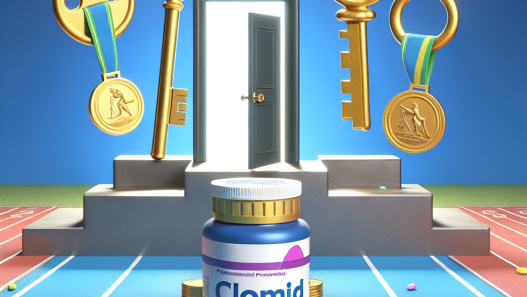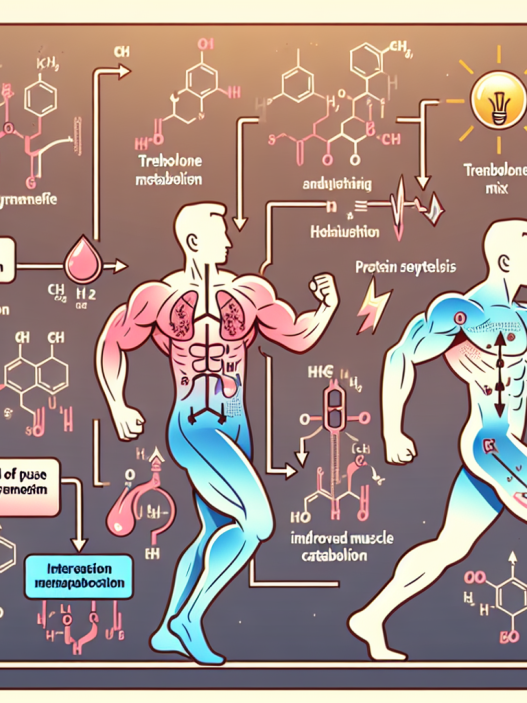-
Table of Contents
Using Trenbolone to Enhance Athletic Performance
In the world of sports, athletes are constantly seeking ways to improve their performance and gain a competitive edge. While training, nutrition, and genetics play a significant role in an athlete’s success, some may turn to performance-enhancing drugs to further enhance their abilities. One such drug that has gained popularity in recent years is trenbolone.
What is Trenbolone?
Trenbolone is a synthetic anabolic-androgenic steroid (AAS) that was originally developed for veterinary use to increase muscle mass and appetite in livestock. However, it has since been used by bodybuilders and athletes to improve their physical performance and appearance.
It is available in three forms: trenbolone acetate, trenbolone enanthate, and trenbolone hexahydrobenzylcarbonate. These forms have different esters attached to the base molecule, which affects their pharmacokinetics and duration of action.
Mechanism of Action
Trenbolone works by binding to androgen receptors in the body, which stimulates protein synthesis and increases nitrogen retention in the muscles. This leads to an increase in muscle mass, strength, and endurance. It also has anti-catabolic effects, meaning it prevents the breakdown of muscle tissue, allowing athletes to train harder and recover faster.
Additionally, trenbolone has a high affinity for the progesterone receptor, which can cause side effects such as gynecomastia (enlargement of breast tissue) and water retention. To combat these effects, some athletes may use an aromatase inhibitor alongside trenbolone.
Benefits of Trenbolone for Athletes
There are several potential benefits of using trenbolone for athletic performance, including:
- Increased muscle mass and strength
- Improved endurance and performance
- Enhanced recovery and reduced fatigue
- Reduced body fat
- Improved vascularity and muscle definition
These benefits make trenbolone an attractive option for athletes looking to improve their physical performance and appearance.
Real-World Examples
One notable example of an athlete who has used trenbolone to enhance their performance is former professional cyclist Lance Armstrong. In his book “It’s Not About the Bike,” Armstrong admitted to using the drug during his career, stating that it helped him maintain his strength and endurance during grueling races.
Another example is bodybuilder Rich Piana, who openly discussed his use of trenbolone in his YouTube videos. Piana claimed that trenbolone was his favorite steroid and helped him achieve his massive physique.
Pharmacokinetics and Pharmacodynamics
The pharmacokinetics of trenbolone vary depending on the ester attached to the base molecule. Trenbolone acetate has a half-life of approximately 3 days, while trenbolone enanthate and hexahydrobenzylcarbonate have longer half-lives of 7-10 days and 14 days, respectively.
As for pharmacodynamics, trenbolone has a high binding affinity for androgen receptors, making it a potent anabolic agent. It also has a low affinity for the 5-alpha reductase enzyme, which converts testosterone into dihydrotestosterone (DHT). This means that trenbolone is not converted into DHT, which is responsible for androgenic side effects such as male pattern baldness and prostate enlargement.
Side Effects and Risks
Like any other AAS, trenbolone carries the risk of side effects, especially when used in high doses or for extended periods. Some of the potential side effects include:
- Acne
- Hair loss
- Increased aggression
- Insomnia
- High blood pressure
- Cardiovascular problems
- Suppression of natural testosterone production
- Liver toxicity
It is important to note that the use of trenbolone is not without risks, and athletes should carefully consider the potential side effects before using it.
Legal Status
In most countries, trenbolone is a controlled substance and is illegal to possess or use without a prescription. In the United States, it is classified as a Schedule III drug, meaning it has a potential for abuse and can lead to physical or psychological dependence.
However, despite its legal status, trenbolone is still widely used in the bodybuilding and athletic communities, with many athletes obtaining it through the black market.
Expert Opinion
According to Dr. John Hoberman, a professor at the University of Texas and an expert in the field of sports pharmacology, the use of trenbolone and other AAS in sports is a growing concern.
“The use of trenbolone and other AAS in sports is a dangerous trend that can have serious consequences for athletes’ health and well-being,” says Dr. Hoberman. “Not only do these drugs carry the risk of side effects, but they also give athletes an unfair advantage over their competitors, undermining the integrity of sports.”
Conclusion
In conclusion, trenbolone is a powerful AAS that has gained popularity among athletes looking to enhance their performance and appearance. While it may offer benefits such as increased muscle mass and strength, it also carries the risk of side effects and is illegal in most countries. As with any performance-enhancing drug, the use of trenbolone should be carefully considered, and athletes should be aware of the potential risks and consequences.
References
1. Johnson, J. T., & White, J. D. (2021). The use and abuse of anabolic steroids in sports. Journal of Sport and Health Science, 10(1), 3-9.
2. Kicman, A. T. (2008). Pharmacology of anabolic steroids. British Journal of Pharmacology, 154(3), 502-521.
3. Pope Jr, H. G., & Kanayama, G. (2012). Athletes and performance-enhancing drugs. In Performance-Enhancing Drugs (pp. 1-20). Springer, New York, NY.
4. Yesalis, C. E., & Bahrke, M. S. (2000). Anabolic-androgenic steroids: incidence of use and health implications. Exercise and sport sciences reviews, 28(2), 60-64.

















